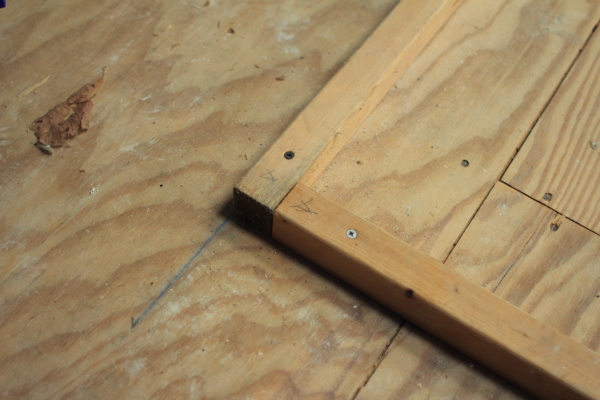Fasteners. Loading, Toughness and Hardness Tests

Today, on our post we want to talk about the testing methods required by ISO 898-1 for connecting elements. In particular, today we want to focus on loading, toughness and hardness tests.
Loading test for screws and finished studs.
This type of test consists of two main actions:
- Application of proof traction loading specified
- Measuring the eventual permanent elongation (caused by the loading test).
#inbound-list.class-pAYoNyRsrF li {
color:#000000;
list-style: none;
font-weight: 500;
font-size: 16px;
vertical-align: top;
margin-bottom: 10px;
}
#inbound-list.class-pAYoNyRsrF li:before {
background: transparent;
border-radius: 50% 50% 50% 50%;
color:#0080ff;
display: inline-block;
font-family: ‘FontAwesome’;
font-size: 18px;
line-height: 18px;
margin-right: 0.5em;
margin-top: 0;
text-align: center;
}
@media only screen and (max-width: 580px) {
#inbound-list.class-pAYoNyRsrF li {
width:100%;
}
}
p:empty {
display:none;
}
Toughness test of screw head.
The toughness test of screw head aims aims at controlling the adapter section integrity between screw head and smooth shanks (or thread). How? The test of toughness of the head aims to check the integrity of the section between the head and smooth shaft (or thread). How? Hammering the screw head of a solid block according to a certain angle.
Hardness tests.
This test determines the hardness of fasteners that
- cannot be subjected to tensile test
- can be subjected to tensile test (in order to check that it has not exceeded the maximum hardness).
#inbound-list.class-hqRWYedXFM li {
color:#000000;
list-style: none;
font-weight: 500;
font-size: 16px;
vertical-align: top;
margin-bottom: 10px;
}
#inbound-list.class-hqRWYedXFM li:before {
background: transparent;
border-radius: 50% 50% 50% 50%;
color:#0080ff;
display: inline-block;
font-family: ‘FontAwesome’;
font-size: 18px;
line-height: 18px;
margin-right: 0.5em;
margin-top: 0;
text-align: center;
}
@media only screen and (max-width: 580px) {
#inbound-list.class-hqRWYedXFM li {
width:100%;
}
}
p:empty {
display:none;
}
Please note that between hardness and tensile strength cannot exist a direct relationship. The hardness values are not specified for a maximum theoretical resistance evaluation. Where can you determined hardness? You can determined it both:
- on appropriate surfaces
- on cross sections by the threaded part.
#inbound-list.class-NVBOcjfiPl li {
color:#000000;
list-style: none;
font-weight: 500;
font-size: 16px;
vertical-align: top;
margin-bottom: 10px;
}
#inbound-list.class-NVBOcjfiPl li:before {
background: transparent;
border-radius: 50% 50% 50% 50%;
color:#0080ff;
display: inline-block;
font-family: ‘FontAwesome’;
font-size: 18px;
line-height: 18px;
margin-right: 0.5em;
margin-top: 0;
text-align: center;
}
@media only screen and (max-width: 580px) {
#inbound-list.class-NVBOcjfiPl li {
width:100%;
}
}
p:empty {
display:none;
}
What is the hardness? And what are the techniques to measure it?
Notoriously, the hardness is permanent indentation resistance of a material by an element under a defined load. How can you measured it? To do this you have been developed several techniques that use different geometries and materials related to indenters. In fact, hardness depends both on geometry and load applied. It is possible, therefore, carry out different hardness tests as:
- VICKERS HV (ISO 6507): with a pyramidal test piece (this is the hardness that is typically used for bolts and screws)
- BRINELL HB (ISO 6506): with a spherical test piece
- ROCKWELL HRC (ISO 6508): with a spherical conical test piece.
#inbound-list.class-nZeirHFQgV li {
color:#000000;
list-style: none;
font-weight: 500;
font-size: 16px;
vertical-align: top;
margin-bottom: 10px;
}
#inbound-list.class-nZeirHFQgV li:before {
background: transparent;
border-radius: 50% 50% 50% 50%;
color:#0080ff;
display: inline-block;
font-family: ‘FontAwesome’;
font-size: 18px;
line-height: 18px;
margin-right: 0.5em;
margin-top: 0;
text-align: center;
}
@media only screen and (max-width: 580px) {
#inbound-list.class-nZeirHFQgV li {
width:100%;
}
}
p:empty {
display:none;
}
Sign up to our blog and stay updated! The next post will talk about different tensile tests.
Visit Inoxmare website and discover all of our stainless steel fasteners. Sign in on our webshop, you’ll see real-time prices and availability of all our products.
Click here
Do you want to read other article? Learn more.
a.mt-share-inline-bar-sm img {
width: 34px;
height: auto;
border: 0px;
}
.inbound-social-share-bar-container {
display: inline-block;
}
.inbound-social-share-header {
vertical-align: middle;
}
a.mt-share-inline-bar-sm:hover {
z-index: 50;
-webkit-transform: scale3d(1.075, 1.075, 1.075);
}
a.mt-share-inline-bar-sm {
display: inline-block;
width: 64px;
height: 32px;
border-top-left-radius: 0px;
border-top-right-radius: 0px;
border-bottom-right-radius: 0px;
border-bottom-left-radius: 0px;
margin-right: 0px;
text-align: center;
position: relative;
transition: all 100ms ease-in;
-webkit-transition: all 100ms ease-in;
-webkit-transform: scale3d(1, 1, 1);
}
a.mt-share-inline-circle-sm img {
width: 34px;
height: 34px;
border: 0px;
}
a.mt-share-inline-circle-sm {
display: inline-block;
width: 34px;
height: 34px;
border-top-left-radius: 50%;
border-top-right-radius: 50%;
border-bottom-right-radius: 50%;
border-bottom-left-radius: 50%;
margin-right: 4px;
}
a.mt-share-inline-square-sm img {
width: 34px;
height: auto;
border: 0px;
}
a.mt-share-inline-square-sm {
display: inline-block;
width: 34px;
height: 34px;
border-top-left-radius: 2px;
border-top-right-radius: 2px;
border-bottom-right-radius: 2px;
border-bottom-left-radius: 2px;
margin-right: 4px;}
.mt-google:hover {
background-color: rgb(225, 95, 79);
}
.mt-google {
background-color: rgb(221, 75, 57);
}
.mt-linkedin:hover {
background-color: rgb(16, 135, 192);
}
.mt-linkedin {
background-color: rgb(14, 118, 168);
}
.mt-twitter:hover {
background-color: rgb(8, 187, 255);
}
.mt-twitter {
background-color: rgb(0, 172, 238);
}
.mt-facebook:hover {
background-color: rgb(66, 100, 170);
}
.mt-facebook {
background-color: rgb(59, 89, 152);
}
.mt-pinterest:hover {
background-color: rgb(221, 42, 48);
}
.mt-pinterest {
background-color: rgb(204, 33, 39);
}
a.mt-share-inline-square-bw-sm img {
width: 34px;
height: 34px;
}
a.mt-share-inline-square-bw-sm.mt-google:hover {
background-color: rgb(221, 75, 57) !important;
}
a.mt-share-inline-square-bw-sm.mt-linkedin:hover {
background-color: rgb(14, 118, 168) !important;
}
a.mt-share-inline-square-bw-sm.mt-twitter:hover {
background-color: rgb(0, 172, 238) !important;
}
a.mt-share-inline-square-bw-sm.mt-facebook:hover {
background-color: rgb(59, 89, 152) !important;
}
a.mt-share-inline-square-bw-sm.mt-pinterest:hover{
background-color: #dd2a30 !important;
}
a.mt-share-inline-square-bw-sm {
display: inline-block;
width: 34px;
height: 34px;
border-top-left-radius: 2px;
border-top-right-radius: 2px;
border-bottom-right-radius: 2px;
border-bottom-left-radius: 2px;
margin-right: 4px;
text-align: center;
background-color: rgb(51, 51, 51);
transition: background-color 300ms ease-in;
-webkit-transition: background-color 300ms ease-in;
}







